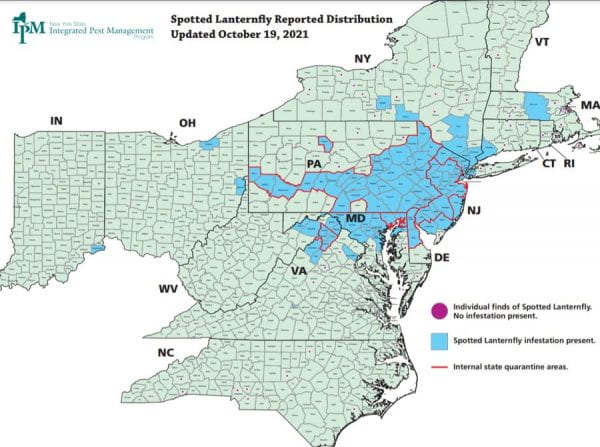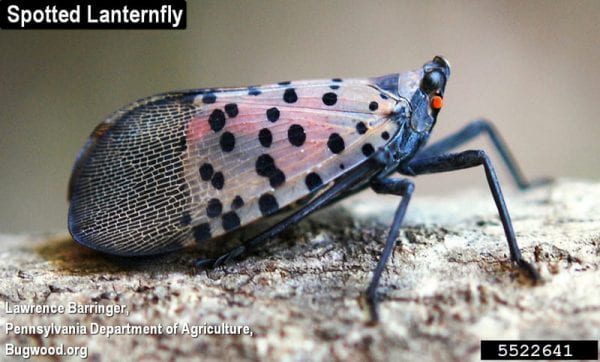Part I last week focused on the basics of spotted lanternfly. What they look like, where they are, where they might be going, what to do if you see some, and more. This week, I want to share a few initial findings (albeit preliminary results) of how spotted lanternfly impact maples. A big thanks to Scott Weikert of Penn State Extension for relaying these great bits of information.
First let’s start with the good news. One bright spot of optimism for most maple producers is that while monitoring efforts are seeing spotted lanternfly in the forest, the pest does not tend to have super high population densities there. Rather, the heaviest infestations tend to be more on the edges. That is perhaps reason to be encouraged for most maple producers, but certainly not all. In my own mind, I would imagine a sugarbush surrounded by intact forest on all sides is at lower risk whereas a backyard sugarmaker tapping a few open-grown trees may face more of a threat.
Heavily infested silver maple trees are showing abnormal bud swelling during the fall and producing no seeds the following year. It remains unknown what the implications are for sap quality, but anytime an insect pest interferes with a tree’s reproductive cycle there is cause for legitimate concern.
It is certainly worth noting that initial data suggest that spotted lanternfly favor silver maple more than red maple. As sugar maple does not constitute much of the forest composition where spotted lanternfly infestations are heaviest in Pennsylvania, it would be conjecture to rank sugar maple’s preference to other maples just yet. As the pest moves into more localities, more will be learned.
Finally, some researchers observed that feeding on red maples tends to be extremely intense and concentrated to just a few weeks in the fall. While no actual mortality has been observed in maples at this time, discoloration of the xylem in branches is a suspected result of heavy feeding. It is uncertain what that damage means for future sap flow, but it stands to reason that discolored wood may inhibit sap flow if the response is similar to when a tree compartmentalizes the wound of a taphole or other injury.
While this post leaves far more open gaps in our understanding of how spotted lanternflies may impact the maple resource in the future, it is a start. As the pest continues to infest new locations and studies gather more data, we will be better equipped to anticipate and combat impacts from this novel forest pest.
For more information, see Part I from last week or check out Penn State’s resources for spotted lanternfly to learn more.
If you see spotted lanternfly or other invasive species, please report your findings! That is the single best way to improve the efficiency of any efforts to fight back. Click here for more information on reporting through the Great Lakes Early Detection Network (GLEDN).









